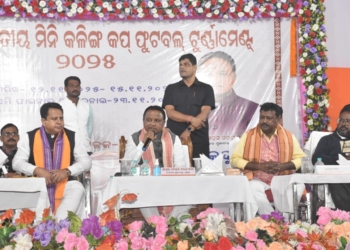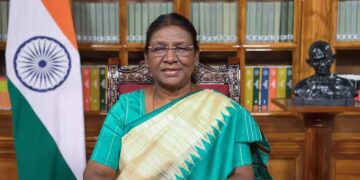As the sacred month of Kartik draws to a close, devotees of Lord Vishnu prepare to celebrate Dev Uthani Ekadashi 2025, also known as Prabodhini Ekadashi or Devutthana Ekadashi.
This auspicious day marks Lord Vishnu’s awakening from His cosmic rest and heralds the beginning of the Hindu wedding season and other auspicious ceremonies.
However, this year, there is confusion about the exact date of observance — November 1 or November 2, 2025 — depending on regional traditions and sectarian practices.
What Is Dev Uthani Ekadashi?
Dev Uthani Ekadashi, observed on the 11th day (Ekadashi) of Shukla Paksha in Kartik month, symbolizes Lord Vishnu’s awakening from His four-month yogic slumber (Chaturmas).
During Chaturmas, auspicious functions such as weddings, housewarmings, and temple rituals are paused. With Vishnu’s awakening, the cosmic cycle of auspiciousness resumes, filling homes and temples with joy and devotion.
Dev Uthani Ekadashi 2025 Date, Tithi, and Parana Time
According to the Hindu Panchang, Dev Uthani Ekadashi will be observed across two consecutive days this year:
| Observance | Date | Ekadashi Tithi | Parana (Fast-breaking) Time |
|---|---|---|---|
| Devutthana Ekadashi (Smartha) | Saturday, November 1, 2025 | Begins: 9:11 AM (Nov 1) Ends: 7:31 AM (Nov 2) |
1:11 PM – 3:23 PM (Nov 2) |
| Gauna Devutthana Ekadashi (Vaishnava) | Sunday, November 2, 2025 | Dwadashi ends before sunrise | 6:34 AM – 8:46 AM (Nov 3) |
The difference arises because Smarthas (householders) typically observe Ekadashi on November 1, while Vaishnavas and ascetics may fast on November 2.
Rituals and Puja Vidhi
Devotees observe this Ekadashi with fasting, prayers, and devotional songs dedicated to Lord Vishnu.
Key rituals include:
-
Ekadashi Vrat (Fast): Observed from sunrise to the next day’s Parana time.
-
Vishnu Puja: Offer flowers, tulsi leaves, incense, and light diyas before the idol or image of Lord Vishnu placed on a decorated chauki (bed), symbolizing His awakening.
-
Chanting: Recite the Vishnu Sahasranama or Om Namo Narayanaya mantra.
-
Tulsi Vivah: Many devotees perform the ceremonial marriage of Goddess Tulsi (Holy Basil) with Lord Vishnu, marking the formal start of the marriage season.
-
Deepdaan: Lighting lamps at temples, homes, and riverbanks is considered highly meritorious.
Do’s and Don’ts on Dev Uthani Ekadashi
Do:
-
Maintain purity, devotion, and calmness throughout the fast.
-
Engage in bhajans, kirtans, and charitable acts.
Avoid:
-
Consuming grains, garlic, onions, or non-vegetarian food.
-
Negative emotions like anger or arguments.
-
Sleeping during the day — staying awake in prayer brings spiritual merit.
Spiritual Significance
Dev Uthani Ekadashi signifies the reawakening of cosmic order and divine consciousness. It ends the four-month Chaturmas period and ushers in a time of prosperity, new beginnings, and sacred unions.
According to Hindu belief, observing this fast with faith and sincerity helps in cleansing past karmas, attaining peace of mind, and receiving Lord Vishnu’s blessings for happiness and growth.
FAQs on Dev Uthani Ekadashi 2025
1. Why is there a date difference this year?
Because of Panchang variations, Smartha followers observe on November 1, while Vaishnavas and monks observe on November 2.
2. Can devotees fast on both days?
Yes. Those who wish to gain additional merit or follow both traditions can fast on both days, ending the fast according to their sect’s Parana time.
3. What is the connection between Dev Uthani Ekadashi and Tulsi Vivah?
Tulsi Vivah, symbolizing the divine marriage of Goddess Tulsi (Lakshmi) with Lord Vishnu, is performed on or after Dev Uthani Ekadashi, marking the official beginning of the Hindu wedding season.
Whether observed on November 1 or 2, Dev Uthani Ekadashi 2025 celebrates divine awakening, renewal, and the start of auspicious times. The festival reminds devotees to awaken their inner light, embrace purity, and begin anew with devotion to Lord Vishnu.





























